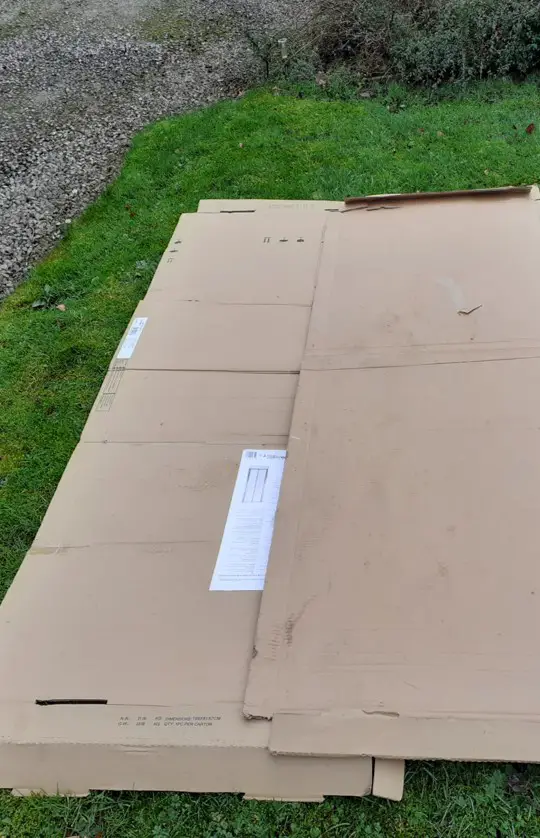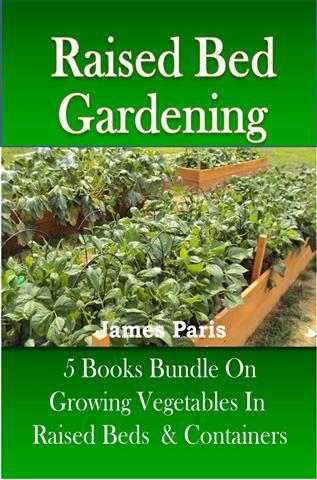Raised bed gardens come in many sizes and types. They are also built in many kinds of different materials. These include wood, concrete, bricks, and even corrugated iron. But should Raised Beds be lined?
Quick answer – YES they should. More so if they are built from an absorbent material such as untreated wood. This will leach away the moisture and nutrients in the Raised Bed soil.
If however the bed is built from a less absorbent material such as concrete. Or your are using a metal garden bed , like the one in the image below. Then lining is not necessary on the sides of the bed – but may be on the bottom for reasons discussed below.
, like the one in the image below. Then lining is not necessary on the sides of the bed – but may be on the bottom for reasons discussed below.
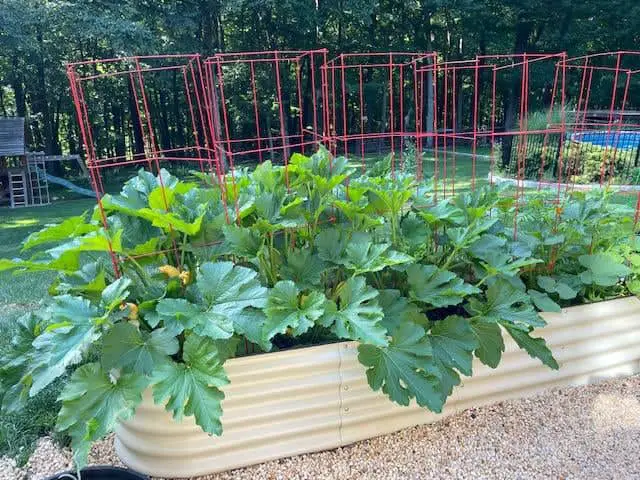
 ‘ do not require a lining
‘ do not require a liningReasons to line a Raised Bed include
- Moisture retention. A traditional timber raised bed can soak up a lot of moisture especially in hot dry climates. Lining the sides of the bed with a suitable plastic liner on the inside will prevent this. Weed fabric will not stop the moisture leaching away. This is free-draining fabric designed only to keep the weeds back.
- Contamination prevention: This is especially if you are using timber such as old railway sleepers. These are common in Raised bed garden
 construction. Old sleepers are often preserved with creosote oil. This will contaminate your bed and potentially kill your vegetables in extreme cases.
construction. Old sleepers are often preserved with creosote oil. This will contaminate your bed and potentially kill your vegetables in extreme cases. - Stop critters: Lining the bed on the bottom is useful for preventing, or hindering burrowing pests. Gophers, or moles for example. Both of which can cause real damage to your veggies. By putting a heavy free draining weed fabric on the bottom you will keep the bed drained and keep away pests. You could also use a galvanised ¾ inch mesh in extreme circumstances. This will stop persistent large burrowing pests.
- Weed control:This is not so much of an issue in a deep raised bed, but in shallow beds it is. Best practice is to line the bottom to stop weeds coming through.
Different liners for raised beds
There are many materials that can be used to line a wooden raised bed . The type of liner that you use for the bed is very much dependent on what exactly you are trying to achieve by doing so.
. The type of liner that you use for the bed is very much dependent on what exactly you are trying to achieve by doing so.
Are you lining the bed to keep away critters – or to stop moisture loss for instance?
Using liners for burrowing Pest control in raised beds. This involves the base area of the bed as this is the main area where they are likely to burrow up from. In this case you will need a liner strong enough to keep away the pests – as described in the chapter above.
in raised beds. This involves the base area of the bed as this is the main area where they are likely to burrow up from. In this case you will need a liner strong enough to keep away the pests – as described in the chapter above.
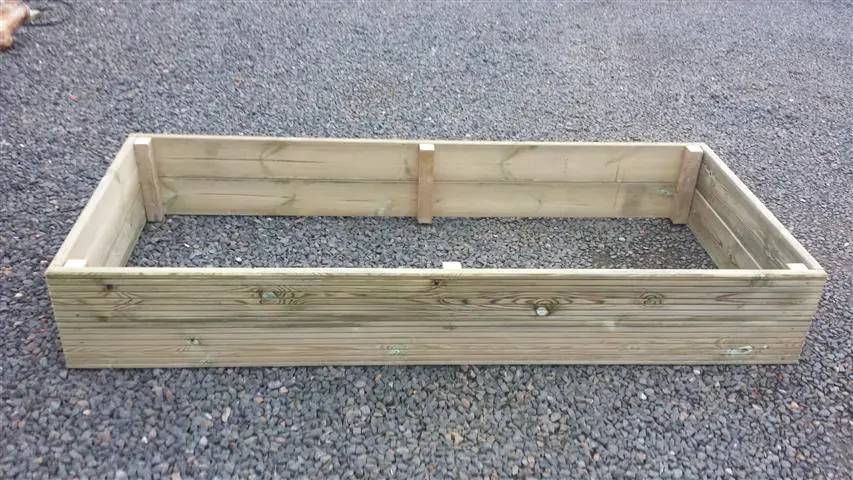
Other liners for raised beds include…
- Cardboard: This is an excellent liner for the base of a shallow bed as it will suppress most weeds. It will also drain away the excess moisture – and worms love cardboard
 ! Every good vegetable garden should have a supply of garden worms to keep the soil in good condition. Cardboard
! Every good vegetable garden should have a supply of garden worms to keep the soil in good condition. Cardboard is not much use on the sides of the bed as it quickly deteriorates and mulches into the soil.
is not much use on the sides of the bed as it quickly deteriorates and mulches into the soil. - Plastic liner: : This is ideal for adding to the insides of the beds as it will keep the moisture contained. But do not use black plastic on the base as it will not allow the bed to drain away excess moisture. Meaning your bed will become ‘sick’ and mouldy. But if this is all you have the answer is an easy one. Perforate the plastic in several places with a garden fork – job done!
- Landscape fabric
 : This is a fabric that is usually free-draining and is designed to keep the weeds suppressed. Whilst it is not wrong to line a raised bed with this fabric, in most cases it is not achieving much at all. Unless it is used only on the bottom of the bed.
: This is a fabric that is usually free-draining and is designed to keep the weeds suppressed. Whilst it is not wrong to line a raised bed with this fabric, in most cases it is not achieving much at all. Unless it is used only on the bottom of the bed. - Hardware cloth: This is a fine mesh product that is used alongside canvas or even cardboard to prevent digging pests. This can also prevent nutrient/soil leaching.
- Old carpet: This can be a good choice for the bottom of the bed as a weed control, and also to encourage worms
 . This is especially the case if it is a cotton or wool carpet. Or indeed any other carpet made from organic natural material.
. This is especially the case if it is a cotton or wool carpet. Or indeed any other carpet made from organic natural material.
Raised bed gardens made from materials such as concrete, brick or corrugated iron. Only need lined on the base of the bed, and this mostly for pest or weed control .
.
The exception to this may be brick built raised beds. As some bricks are indeed very absorbent and may well leach away your moisture on hot days. In this case a lining on the insides of the bed with a suitable builder’s plastic will do the job as described above.
As some bricks are indeed very absorbent and may well leach away your moisture on hot days. In this case a lining on the insides of the bed with a suitable builder’s plastic will do the job as described above.
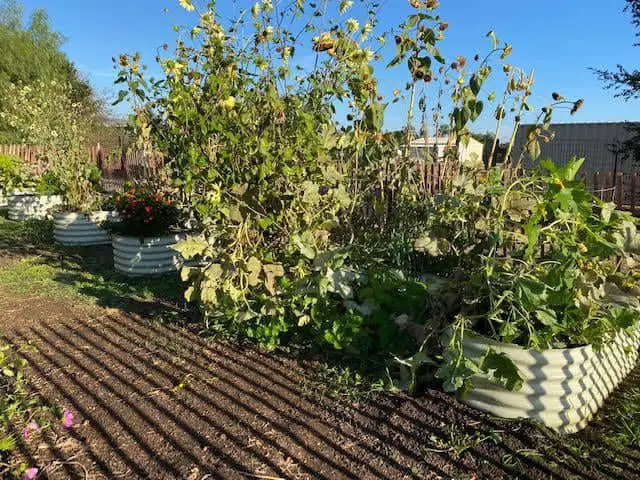
 ). Do not need any liner added.
). Do not need any liner added.How long will liners last in a raised bed?
Plastic liners will usually last a good 7-10 years plus depending on the grade of the liner. Pond liners (also a good liner for raised beds ) will last more than 10-15 years. Check this with the supplier of the material.
) will last more than 10-15 years. Check this with the supplier of the material.
Woven landscape fabric will also last a long time. More than ten years, but has a tendency to fray at the edges if they are exposed at all.
will also last a long time. More than ten years, but has a tendency to fray at the edges if they are exposed at all.
Thinner garden fabrics will only give around 3-5 years of use before they start to break up, this is especially if they are the ‘bargain basement’ type on offer (you get what you pay for!).
Canvas or burlap liner (made from jute or flax). This will last for several years depending on the moisture levels as it is an organic material. This is not very much use for the sides but is a good liner for the bottom of the raised bed
(made from jute or flax). This will last for several years depending on the moisture levels as it is an organic material. This is not very much use for the sides but is a good liner for the bottom of the raised bed to keep away weeds and pests.
to keep away weeds and pests.
Old carpet liners will again last according to the material they are made from. Avoid rubber backed carpet and instead use only woven backed. With a high wool content.
Raised Bed Liner Chart:
| Plastic Liners. | Good to prevent moisture leakage and absorbency on timber raised beds. |
| Landscape fabric. | Good for use on the bottom of the beds but not so much on the sides. |
| Cardboard Liner. | Good for the bottom of shallow beds to restrict weed growth. |
| Hardware Cloth. | A good choice for the bottom of the raised bed to prevent gophers or moles. |
| Old Carpet. | Old woollen carpet is a good choice for the base of the bed to prevent weeds. |

